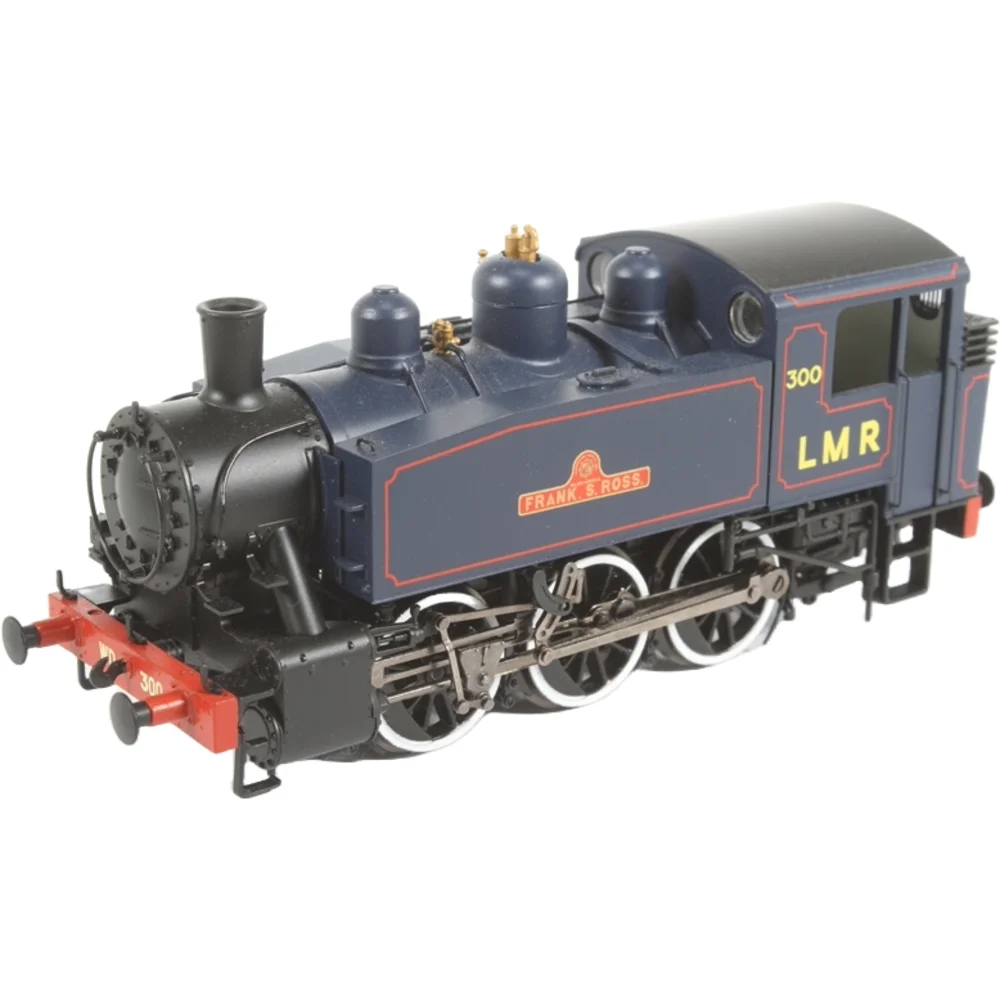Bachmann MR-105
Southern Railway USA 300 "Frank S Ross" Longmoor Military Railway Blue
Tooling
In 2016, Model Rail Magazine introduced an exclusive ready-to-run model of the Southern Railway “USA” Class 0-6-0T, based on the USATC S100 design. Originally commissioned from Dapol, the project was cancelled and later offered to Bachmann Branchline, who developed entirely new tooling. These locomotives were built during WWII for shunting duties and later adapted by Southern Railway for use at Southampton Docks. Fifteen were purchased post-war, earning the nickname “Yank Tanks.” Several survived into preservation, making them a popular subject for modellers.
Tooling Features
- Scale: OO gauge (1:76.2)
- Construction: Injection-moulded plastic body with fine rivet detail; die-cast metal chassis for weight and stability
- Detailing: Two cab variants (USATC & SR), two smokebox styles, separate wire handrails, turned brass safety valves and whistle, detailed cab interior with glazing, full brake rigging, chemically blackened wheels, correct-thickness rods
- Couplings: NEM pockets with tension-lock couplers; sprung metal buffers
Mechanical & Electrical
- Motor: 5-pole skew-wound can motor with flywheel for smooth running
- Drive: Worm and gear drive to all axles; pickups on all wheels
- Minimum Radius: 2nd radius (438 mm)
- Weighting: Internal chassis weighting for adhesion
- Lighting: None (prototype had no lights)
DCC Capability
DCC Ready with a 6-pin NMRA socket. No factory provision for sound, but aftermarket installation is possible. Any NMRA-compliant decoder can be fitted.
Liveries Produced
The range included USATC black, Southern Railway black, BR black (early and late crest), BR green, Longmoor Military Railway blue, National Coal Board black, and preservation schemes such as Keighley & Worth Valley golden ochre. Two additional variants were released in 2018.
Reviews & Commentary
Reviews praised the model’s exceptional detailing and smooth, slow-speed performance. The mechanism was described as “one of the slowest and smoothest runners straight from the box,” ideal for shunting layouts. Social media and YouTube reviews highlighted the fine cab detail, accurate valve gear, and robust build quality, though some noted fragility due to the level of detail.
Video Reviews
- Sam’s Trains Review – “American Engines Used In Britain? | Bachmann USA Tank” – Unboxing, detail close-ups and running tests.
- Model Rail Exclusive Review – “Limited Edition Bachmann USA 0-6-0T Class” – Focuses on the MR-103 catalogue version, running performance and comparisons.
Interesting Facts
- The tooling was exclusive to Model Rail and not shared with Bachmann’s standard range.
- Initial batch of ten versions sold out quickly; prices ranged from £124.95 to £129.95.
- The project marked one of the first collaborations between a UK magazine and a major manufacturer for a fully tooled RTR locomotive.
Class & Prototype
- Class: Southern Railway USA
- Traction: Steam
- Built: 1942-1943
- Total Built: 382
No prototype found.
Operator & Livery
- Operator: Longmoor Military Railway
- Livery: Blue
The Longmoor Military Railway (LMR) was Britain's military railway training facility, operating from 1903-1969 in Hampshire. Built by the Royal Engineers, it trained soldiers in railway construction and operations for global deployment. The railway featured over 1,000 locomotives during its existence, including famous War Department Austerity designs in distinctive royal blue livery with red lining. Originally known as the Woolmer Instructional Military Railway, it was renamed LMR in 1935. The 8-mile system connected Bordon to Liss with a circular training loop, serving as a filming location for movies like Chitty Chitty Bang Bang and Bhowani Junction. Many locomotives survive in preservation, making LMR a popular subject for railway modellers across all scales.
The distinctive LMR blue livery was the standard paint scheme used on Longmoor Military Railway locomotives from the post-World War II period until closure in 1969. The scheme consisted of royal blue as the base colour, enhanced with red lining applied to frame components, coupling rods, and wheel tyres. Yellow lettering was prominently displayed on cab sides and tank sides, featuring "LMR" initials alongside locomotive numbers in standardised military fonts.
Contemporary accounts describe the livery as "royal blue lined red, with red rods and yellow lettering," creating a smart military appearance that distinguished LMR locomotives from civilian railway stock. Some sources also refer to it as "Oxford Blue" when describing rolling stock applications. The scheme maintained military standards of appearance whilst providing high visibility for safety purposes during training operations.
Variations existed within the standard scheme—some locomotives featured red frames and under foot plating with blue wheels, whilst others retained black frames with blue bodywork. Special occasions, such as locomotive naming ceremonies, included additional white wheel treatments. The livery was also applied to coaching stock and rolling stock, creating a cohesive visual identity across the entire railway.
For modellers, Precision Paints P16 (Royal Blue) provides accurate colour matching, with careful application of red lining and yellow lettering essential for authentic representation. The distinctive scheme remains popular among military railway enthusiasts and is featured on various ready-to-run and kit models across multiple scales.
